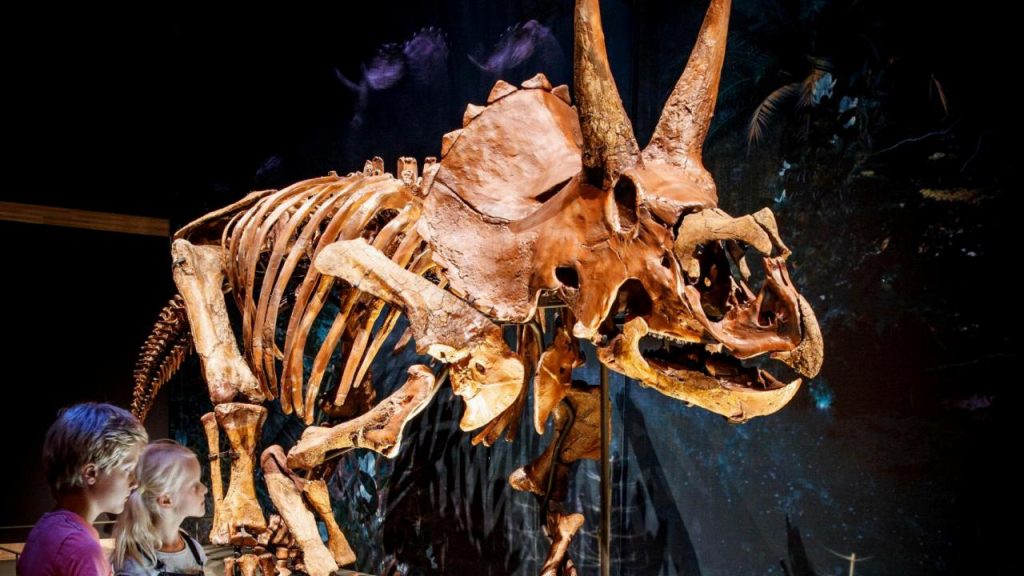In the vast expanse of Wyoming’s fossil-rich terrain, a team from the Naturalis Biodiversity Center embarked on a quest to uncover the secrets of the prehistoric past. What began as a search for the formidable Tyrannosaurus evolved into a remarkable discovery: the remains of not one, but five Triceratops dinosaurs. This serendipitous find ignited a decade-long investigation, shedding light on the lives and deaths of these iconic creatures that roamed the earth millions of years ago.
The Discovery: Amidst the rugged landscape of Wyoming, the team unearthed a treasure trove of 1,200 bones and bone fragments belonging to at least five individual Triceratops specimens. What started as a routine excavation transformed into a comprehensive study of unprecedented scale and significance. Led by dedicated researchers and volunteers, the project unveiled a wealth of insights into the behavior and biology of these ancient giants.
Decoding the Fossil Record: With meticulous care, researchers delved into the physical and chemical properties of the Triceratops fossils, unraveling clues about their lives and interactions. The exceptional quality of the specimens provided invaluable data, revealing intriguing details about the dinosaurs’ growth rates and migratory patterns. Through careful analysis, the team pieced together a narrative of a herd that met a common fate, possibly entangled in the murky depths of a prehistoric swamp.
Insights into Social Behavior: One of the most intriguing revelations from the study was the evidence of migratory behavior shared among all five Triceratops individuals. The analysis of hundreds of teeth unearthed further evidence of this communal lifestyle, raising intriguing questions about the complexity of their social interactions. As researchers delve deeper into the mysteries of Triceratops behavior, new avenues of inquiry emerge, offering tantalizing glimpses into the dynamics of prehistoric ecosystems.
A Journey from Excavation to Exhibition: Under the guidance of Prof. Anne Schulp, the journey from excavation to exploration culminated in a landmark achievement for both Naturalis Biodiversity Center and Utrecht University. The monumental Triceratops find now stands as the largest of its kind in the world, showcasing the collaborative efforts of scientists and enthusiasts alike. Dr. De Rooij’s groundbreaking research not only yielded scholarly insights but also inspired an immersive exhibition at Naturalis, offering visitors a glimpse into the ancient world where five Triceratops dinosaurs lived and perished together, 67 million years ago.
The discovery of five Triceratops dinosaurs living and dying together in Wyoming’s fossil beds is a testament to the enduring mysteries of our planet’s distant past. Through tireless excavation and meticulous analysis, researchers have unlocked a wealth of knowledge about these magnificent creatures and their interconnected lives. As the exhibition at Naturalis embarks on a global tour, it serves as a poignant reminder of the fragility and resilience of life on Earth, spanning millions of years and captivating generations to come.
